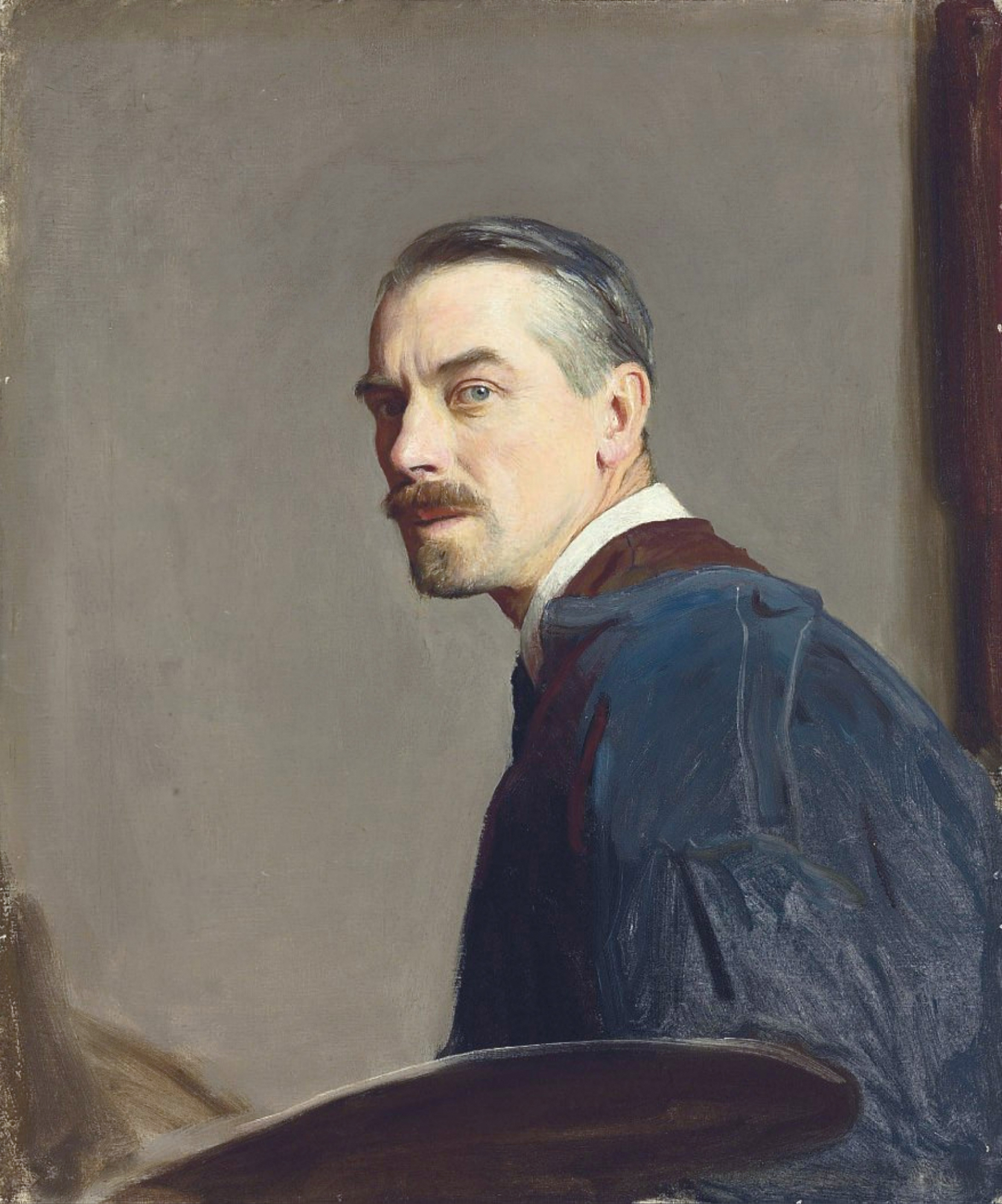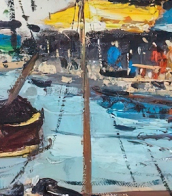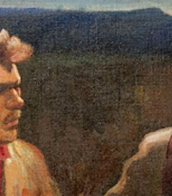portrait of a girl



Aleksei Alekseevich Kharlamov (russian: Алексей Алексеевич Харламов) was a Russian artist renowned for his portrait paintings. Born in 1840 in Saratov, Russia, Kharlamov displayed artistic talent from an early age, eventually studying under the guidance of Professor A. T. Markov at the Imperial Academy of Arts. His dedication to art was rewarded with several medals during his academic years, and his piece titled "Baptism of Kiev" earned him a prestigious gold medal in 1866.
Kharlamov spent much of his career in Paris, where he was deeply influenced by Western European artistic movements. His works often featured delicate and finely detailed representations of women and children, capturing the subtleties of expression and mood which became his signature style. Notably, his painting "Young Woman and Child" from 1894 showcases his adept use of light and texture to portray serene domestic scenes, a piece that is currently held in the Bowdoin College Museum of Art.
Throughout his career, Kharlamov was associated with prominent cultural figures such as the novelist Ivan Turgenev, and he participated actively in the Parisian art scene. His portraits were highly sought after, with clients paying substantial sums for his works, reflecting his status as a distinguished portraitist of his time.
For those interested in exploring the works of Aleksei Alekseevich Kharlamov and the rich cultural tapestry of his era, signing up for updates on auctions and events featuring his art can provide valuable insights and opportunities to acquire pieces by this notable artist. Stay informed about the latest sales and exhibitions by subscribing to our newsletter dedicated to Kharlamov’s legacy.


Vasily Andreevich Tropinin (Russian: Василий Андреевич Тропинин) was a Russian Romantic painter, whose journey from serfdom to artistic freedom is as captivating as his art. Born in 1776, Vasily Tropinin spent a significant part of his life as a serf, only gaining freedom at the age of 47. His talent in painting, particularly in portraying intimate, personal, and "disheveled" portraits, earned him the nickname "a robe portraitist" among Muscovites.
Vasily Tropinin's works are celebrated for their deep analysis of the Russian national character and their reflection of the social types of his era. Notable works include "The Lace Maker," "Portrait of Alexander Pushkin," and portraits of everyday people, capturing the essence of Russian life with authenticity and emotional depth.
His contributions to Russian art did not go unnoticed, as he was awarded the title of "appointed academician" and later elected an Academician, reflecting his status as a respected artist of his time. Vasily Tropinin's legacy lives on, with more than 3,000 portraits credited to his name, and the Tropinin Museum in Moscow dedicated to his and his contemporaries' works.
For collectors and experts in art and antiques, Tropinin's paintings offer a unique window into 19th-century Russian life and culture. To stay informed about updates related to Vasily Andreevich Tropinin, including sales and auction events, consider signing up for updates, ensuring you remain connected to the rich heritage of Russian art.




George Spencer Watson was an English portrait artist of the late romantic school who sometimes worked in the style of the Italian Renaissance.


George Clausen was a British artist working in oil and watercolour, etching, mezzotint, dry point and occasionally lithographs. He was knighted in 1927.


Peter Lely, née Pieter van der Faes, was an English painter of Dutch origin, a member of the Guild of St. Luke in Haarlem.
In England his talent as a portrait painter was very highly regarded, he became a British subject and was knighted. For many years Lely had the title of the most fashionable portrait painter in England. He was the chief portrait painter at the court of Kings Charles I and Charles II. Lely painted many portraits of noble knights and ladies of the court.


George Clausen was a British artist working in oil and watercolour, etching, mezzotint, dry point and occasionally lithographs. He was knighted in 1927.


Heinrich Eberhard was a German modernist painter.
Eberhard studied at the Royal Academy of Fine Arts in Stuttgart, and was decisively influenced in his artistic development by the modernist pioneer Adolf Helzel (1853-1934). In 1920 he became a member of the Stuttgart "Üecht Group", which also included Willy Baumeister and Oskar Schlemmer, and was a member of the legendary Hölzelkreis.
Eberhard's oeuvre includes oil paintings, drawings, prints and stained glass windows and is characterized by a stylistic pluralism between expressive naturalism, cubist influences and abstraction.
During the Nazi "Degenerate Art" campaign in Germany in 1937, some of the artist's paintings were removed from galleries and destroyed, but in 1943 he was allowed to exhibit one canvas that met the tastes of the authorities. After the war, Eberhard continued to create with success, participating in exhibitions.


Margarita Pueva is a Bulgarian and German painter and sculptor.
She studied at the Academy of Fine Arts, Veliko Tarnovo, Bulgaria. She has lived and worked in Germany since 1991 and opened the Pueva Gallery in Düsseldorf in 2003.
Pueva focused mainly on the human figure. The people in her paintings are strange, introverted, passive and vulnerable, but her work recalls the magical land of Alice and her Mad Hatter. She was inspired by medieval religious sculpture and the primitive art of Africa. Pueva's work is regularly presented in Germany, France, Italy, and the UK.


Anatoly (Anatoli) Timofeevich Zverev was a Russian artist, a member of the non-conformist movement and a founder of Russian Expressionism in the 1960s. He spent all of his life in Moscow.
He did not have a solo show in Russia until shortly before his death in 1986 and his work was exhibited in small, underground galleries. Throughout his career he was harassed and persecuted by the Soviet authorities especially as his international success grew.













































































